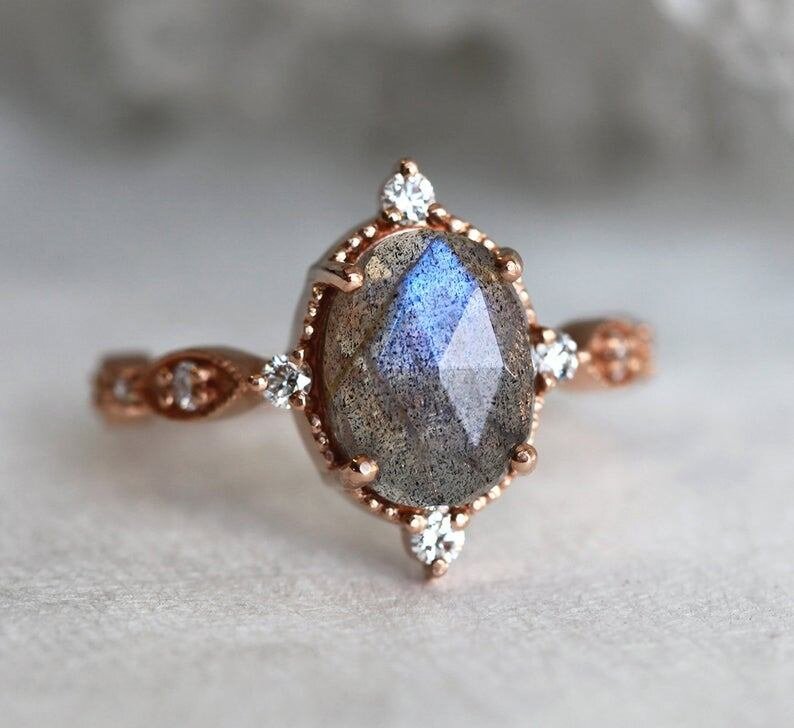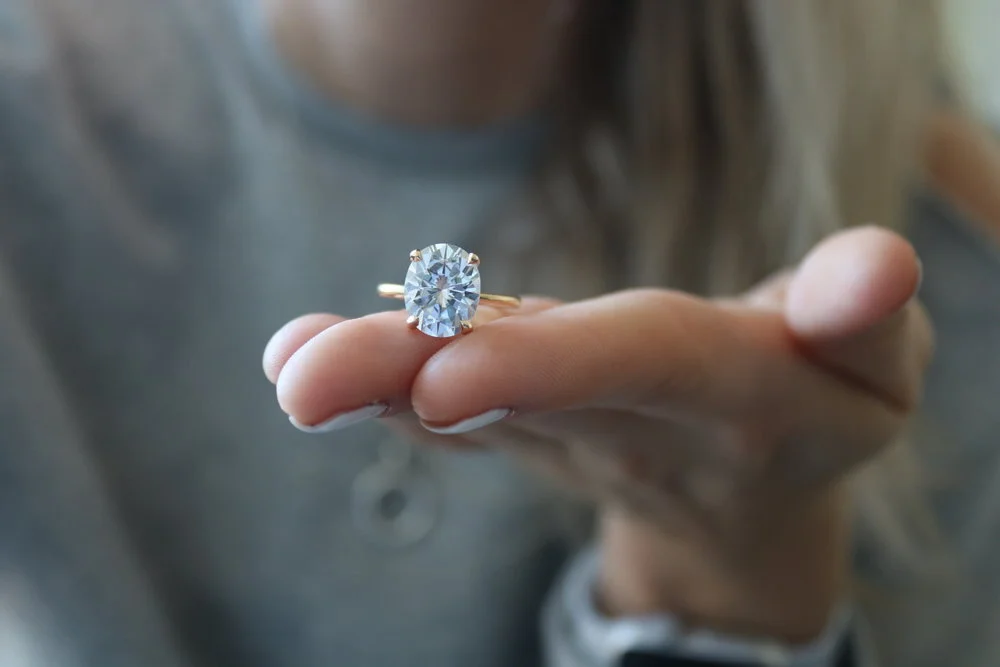Ring Worm: Everything you need to know about choosing your ring
Everyone and anyone will tell you that the key to picking a great ring is to look for: Colour, Carat, Cut, and Clarity. What they won’t tell you though is that there’s often so much more than that!
The Style
Ok, first thing’s first - before you get too carried away it’s important to figure out your basics.
What sort of band do you want?
Do you want it to be:
- silver
- platinum
- white gold
- rose gold
- yellow gold
Obviously, these are just some of the most popular options out there, but they’re a great place to start mainly because these ones at least don’t rust or warp too much over time.
The Stone
Next up. If you’re going the centre stone/stones route - what sort of centre stone do you want? We all know that marketing companies have made diamonds the most popular/traditional over the last century, but there are actually a whole bunch of beautiful options that you can choose from.
Amber
Amethyst
Turquoise
Diamond
Labradorite
Aquamarine
Ruby
Onyx
Tsavorite
Peridot
Opal
Tanzanite
Sapphire
Tourmaline
Sunstone
Topaz
Lapis Lazuli
Emerald
Morganite
Garnet
Pearl
Moissanite
Check out some of these beautiful options below:
Gem Cut
If you do choose to go with a centre stone gem that has a cut take some time to figure out not just what you like best, but also what looks best on your hands - trust me, you might actually be surprised what actually suits you most!
Here is a quick rundown of some of the standard options available.
Need some help narrowing it down? Here are some fun and helpful facts:
Brilliantly cut round diamonds are the most expensive stones to buy per carat mainly due to the amount of actual detail in the cut itself - they have a whopping 58 facets! - so they tend to pick up light more, be a little sparklier, and, as a result, are a very popular choice.
Diamonds with a princess cut tend to feature a contemporary and angular beauty that looks absolutely stunning in classic (think geometric) settings - they offer the brilliance of a round diamond but have a lower price point.
An oval shaped diamond or gem helps maximize the size appearance of the ring - with a bigger ‘spread’ they reveal a lot more of the stone’s weight at the surface, so they appear to be a lot bigger than they are.
If you’re looking for something a little more “vintage” looking, check out cushion cut diamonds
Thanks to their elongated shape, pear-shaped, marquise, and oval diamonds help fingers look long and lean.
If the workmanship and cut of a diamond or gem are poor, the jewel will look dull and lifeless. That’s essentially why cut is so important.
Colour
Colour is another huge thing to look for when it comes to picking a gem or diamond. While everyone sees colour different, most people prefer (read: are used to) a colourless or “white” diamond. The most common colour grade selection for a centre diamond is something with an F-H colour, but there are lots of other beautiful options available that can totally change the mood and tone of whatever beautiful ring you’re creating.
Check out some of the colour grading options here:
Clarity
The final characteristic that it normally considered when picking a stone is the clarity of it. That’s because while clarity is definitely an important part of any stone, it honestly has the least amount of impact on its overall appearance. Some diamonds have visible inclusions, but most can’t really be seen with the naked eye. That’s why you can probably go with something like a “VS2” or “SI1” clarity grade and still be ok. If clarity is super important to you, you might want to go for an “IF” or a “VVS” clarity grade, but it really is just dependent on your personal taste.
Setting
Just like the setting of your wedding is important to help you showcase the meaningful ceremony, the setting of your stone can equally set the tone and vibe of your overall ring.
While it might seem like there are only one or two standard options, there are actually dozens to choose from - and each one can completely change the overall look of your ring!
Here are some samples below:
The Bezel Setting
Notice the metal lip that goes completely around the stone? That’s what makes a ‘Bezel Ring’. Since the stone is so well protected, Bezel’s are actually a super popular choice for people who might be a little rougher with their hands. They take bumps well, protect the stone from accidental rubbing, minimize the impact of scratches, and prevent major blows.
The Split Band Ring
The split band, AKA the split shank, is characterized by a band that litereally splits at the shoulder. This style of ring is nice as it covers a larger surface area than most bands, creating a larger, more luxurious look.
The Solitaire Ring
Solitaire rings are one of the most popular ring settings for those wanting a really classic and timeless look. They’re suited if you’ve got one gem or stone that you really want to showcase in a simple, yet sophisticated way.
The Bypass Ring
A Bypass ring is a ring that has two ends that come together in the front/centre and then curve apart. It’s design is thought to represent two souls coming together as one, so it’s really great for the super sentimental type who want absolutely every part of their ring to have some sort of special meaning.
The Cathedral Setting
When you think of a traditional solitaire ring, you probably think of one with a cathedral setting. Reminiscent of the arches you might see in an actual cathedral, they’re graceful and elegant with flat shoulders that cover the lower part of the crown. This style is perfect if you’re looking to elevate the stone (making it appear larger) and looking to have more light shine through (making it appear shinier).
The Milgrain Band
These rings feature fine-beaded accents that are often found on the edges of the ring itself. It’s a super vintage looking style that will really give a lot of texture and detail, making the ring look incredibly hand-crafted.
The Half Bezel
Remember how we talked about the full bezel being the most beautifully protected ring? Well a half bezel, is literally half of that. A half bezel ring has a bezel that covers only part of the stone. They’re great because they let more light shine into the stone than a traditional Bezel, allowing your more fire and brilliance, but they also offer you that extra bumper protection allowing you to wear your ring anywhere with ease.
The Filigree Setting
Curated in a delicate fashion with intricate designs or wirings along the side, Filigree engagement rings have an heirloom and very antique feel. If you’re someone who loves a good vintage feel, this one is definitely for you!
The Halo Setting
Ever seen a ring that looked so heavenly it might as well have had a halo?! Well, odds are, it did! Halo rings are what we call rings with a large centre stone that is surrounded by a “halo” of smaller stones. You can do a single halo, a double halo, or even a hidden halo to add a personalized and beautifully surprising element to any halo ring.
The Six Prong Ring
A six prong ring is exactly what it sounds like, a ring in which the centre stone is secured by six prongs. These specific kinds of rings look great when paired with a round cut diamond or gem allowing the six-prongs to form a hexagonal shape shape it. This shape has a serious advantage as it’s definitely more secure than most (I mean, there are six prongs after all), it often makes the stone look bigger than it actually is, and it helps emphasize the shape of the gem if you’re going for that stunning solitaire look.
The Three Stone Ring
Three stone rings are stunning! With one larger stone typically in the middle, the three stones represent the three aspects of relationships: friendship, love, and fidelity. They’re great for making a beautiful yet unique statement that tells a romantic story.











































